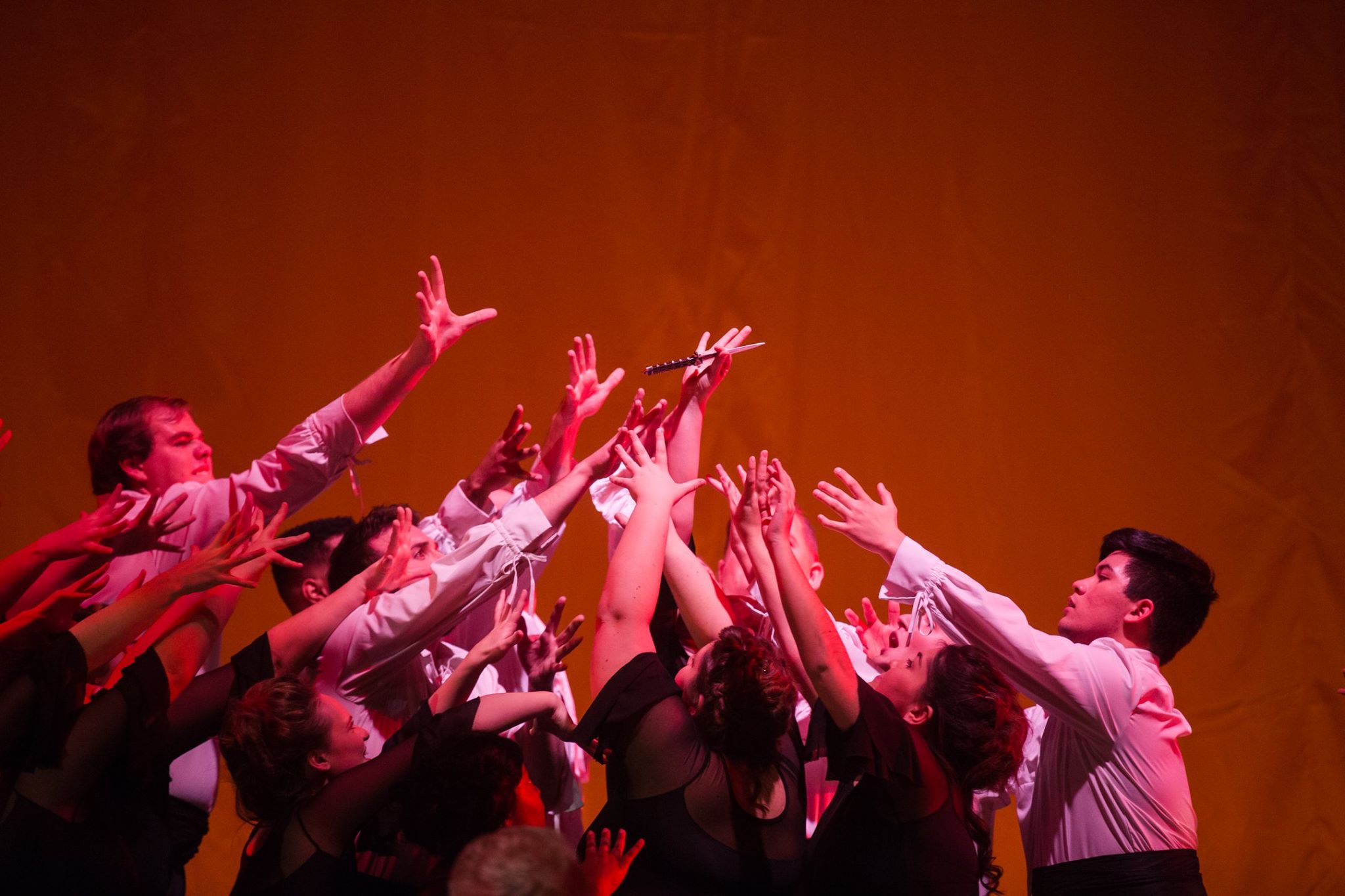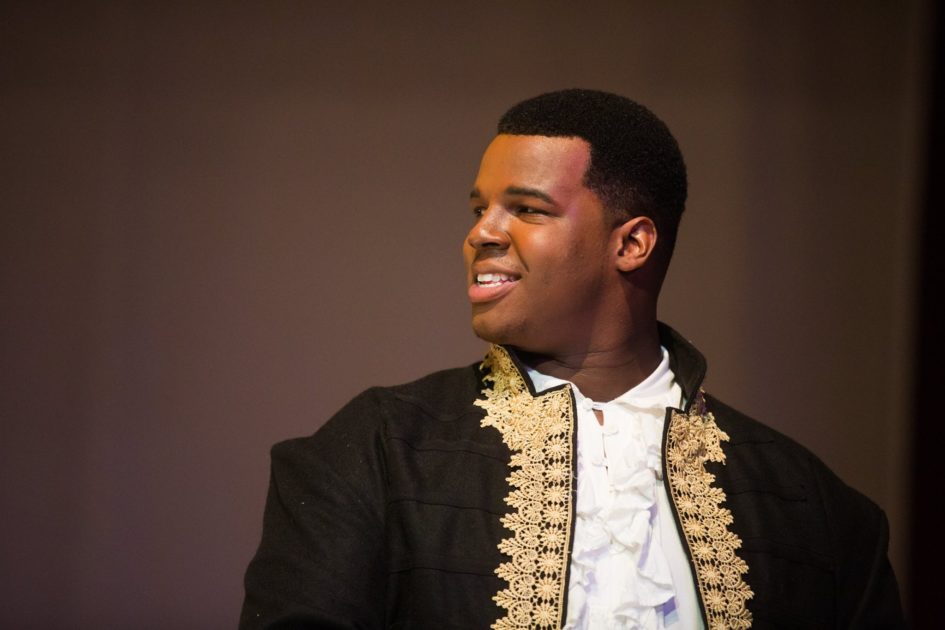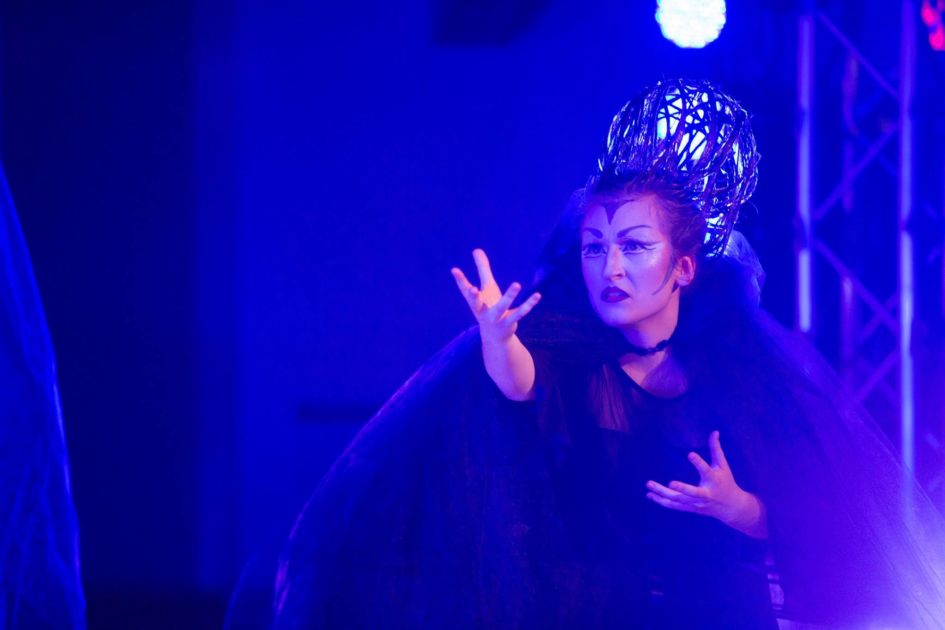The Conservatory of Music featured its latest theatrical production this past weekend with the opening of Henry Purcell’s Dido and Aeneas.
A tragedy based on an episode from the Aeneid, Dido and Aeneas tells the unfortunate tale of the Trojan hero Aeneas and his lover Dido, the troubled queen of Carthage.
Aeneas, after escaping Troy at the end of the Trojan War, sets sail and eventually lands in Carthage, where he meets and falls in love with Queen Dido. However, a group of witches that Dido has cast out conspire against her, resulting in the couple being forced to part and for Dido to meet her eventually demise.

As I stepped into Mees Hall for the second night of the show, I was immediately struck by alterations done to the auditorium. Instead of its typical Proscenium architecture, a white-raked stage had been constructed and placed atop Mees’ stage, and in the center of the circle sat the orchestra pit.
As the show commenced, text began to appear on a rippling curtain on the back wall of the stage to give the audience clarity on what was being sung. The orchestra played on as the actors took the stage and began to make their way across the tilted platform.
As I watched on, I was impressed at how well the elements of set, music, and performance blended together to provide a visual wonder. The set design and lighting were effectively used to communicate mood and to provide visual interest to an otherwise smaller setting.
The costume design was unique and captivating, with the hairstyle and outfit of the sorceress (played by Jessie Strait) being the most fascinating getup to behold of the entire production.
The performers themselves appeared thoroughly focused in successfully conveying the story through their voice and motions, and credit must be given to both Lindsey Polcyn as well as Christopher Humbert Jr. for their regality and powerful, thunderous voices.
My only complaint towards the production is that the story seemed to end quite abruptly without a fight against the forces that threatened Dido and Aeneas’ love. I felt that the characters failed to put up any resistance towards their fate, and the “lay-down-and-die” attitude of the Dido and Aeneas toward their impending separation was jarring and made one question if the story was truly finished once the opera concluded.
Regardless of the storyline, the cast and crew of this production put a great deal of effort into this opera to make it a stunning sensory treat for both the ears and eyes.
Professor William Boggs, an adjunct of the Conservatory of Music and conductor of the opera, said this was the first baroque opera Capital has produced in at least 20 years.
“It’s something we don’t normally do. We do everything from current musical things you could see on Broadway back to really standard opera and operetta repertoire,” Boggs said. “But baroque opera, that’s a century and half before anything we’ve ever looked at.”
“It’s a great piece for universities to tackle because it’s the beginning of the repertoire … I picked it because it is such a great piece for young singers,” Professor Joshua Borths, the director of opera and musical theatre as well as stage director for the opera, said. “It is challenging, it is bold, it’s a different style of music than most students are familiar with, but it’s also able to be accomplished by talented students of the undergraduate level.”
Lindsey Polcyn, a junior vocal performance major and lead actress Dido, said that a great deal of detailed work went into creating the production.
“Every movement, every word, everything has some sort of meaning to it. Nothing gets left behind,” Polcyn said. “So, it’s been an acting challenge for everyone in the cast to not only show the individuality of each of our characters, but to also work as a unit.”






